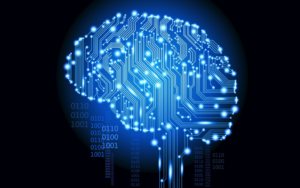What's Computational Thinking?


Written and verified by the psychologist Valeria Sabater
Computational thinking is a skill that can open many doors in the future. Knowing how to formulate problems, organize information logically, or think abstractly are basic processes that formulate this valuable cognitive approach.
In an increasingly complex world, we undoubtedly need to know how to handle the challenges of our surroundings.
So does this approach mean learning to think as machines do? Not really. It also integrates many of the areas that, at present, artificial intelligence can’t handle or attain to. Lateral thinking is also related to computational reasoning, as does knowing how to handle emotional variables and, above all, understanding human behavior.
Of course, the term “computational” makes us automatically think of the world of logarithms, chips, and subroutines of sophisticated computers. However, what this approach seeks is something quite different. This perspective seeks to face all the problems that may open up in the next few years by uniting technology and humanity, needs with answers, and challenges with innovative proposals.
Let’s analyze this topic a little more.

Computational thinking: definition, characteristics, and purpose
Computational thinking is a term that originated in the theories of Seymour Papert, pioneer in the field of artificial intelligence and inventor of the Logo programming language in 1968.
In 1995, he proposed the need to reformulate the education system and integrate computers and their language into the school curriculum. Thus, he foresaw the need to offer the world people trained in the area of computing.
Dr. Papert laid the foundations of this approach throughout the 90s. However, after his death, Dr. Jeannette Wing developed this idea much further. This computer engineer and former vice president of Microsoft explained in her research work that computational thinking will influence all fields of activity. One of her main papers was “Computational thinking and thinking about computing”.
She also insists on the importance of what Papert proposed: that this new competence must be integrated into the school curriculum. It’s an essential skill that will underpin so many areas in the future, such as engineering, humanities, and science. Let’s have a look at what computational thinking consists of.
What exactly is it?
Computational thinking is a high-level cognitive process that allows us to think scientifically when solving problems. One thing we know is that computers and new technologies make our lives easier by solving multiple challenges. However, we need to be one step ahead of them.
Furthermore, Dr. Jeannette Wing points out that we must understand how machines “think” in order to improve their operation in the future. What we need is to know how to combine natural processes with artificial ones. We need to learn how to merge our intuition and lateral thinking with the cognitive processes we extract from computing.
The characteristics of computational thinking
This type of perspective consists of developing a series of executive functions. In reality, we already use them in our daily lives but we aren’t aware of them and we don’t get everything out of them that we should.
After all, nothing is more enriching than “learning to think better”. Thanks to this, we’d be able to solve everyday challenges in a more innovative way.
Computational thinking is based on four basic axes, which are the following:
- Decomposing. We can divide every task or problem into smaller parts in order to understand them better.
- Knowing how to recognize patterns. Every phenomenon, experience, stimulus, problem, or circumstance usually follows an internal scheme and responds to a pattern that we can identify.
- Abstract thinking. This type of reasoning is exclusive to human beings. Thanks to it, we can create original ideas or even foresee situations or scenarios to know how we’d act under those circumstances.
- Algorithms. An algorithm is a plan, a series of steps, or a diagram that allows us to solve a problem step-by-step. Thanks to them, we can elaborate a series of clear and simple instructions to face any given event. A number of aspects define them. For example, they always have a finite number of steps, have a definite end in mind, and are specific (not ambiguous).
Its steps
When using computational thinking, besides being aware of all the factors and variables that define it, and that we’ve already analyzed, there’s another aspect we must understand. It’s important to know the sequence that this type of thinking usually follows.
- Analysis. When solving a problem, you always have to analyze the problem thoroughly beforehand.
- Abstraction. The second step is to know how to formulate the problem. What’s actually happening? Is there a pattern? What strategy can I design? What comes to mind from past experiences related to this same situation?
- Expression of the solution or proposal. After mentally designing the strategy you need to follow, it’s time to apply it and test it.
- Evaluation. After the execution, it’s time to evaluate. Did I get the desired result or can I improve it in any way?
- Generalize and transfer. When evaluating the success of what you’ve obtained, you can use what you’ve developed to apply it to other areas.

The importance of learning to think
Daniel Kahneman, psychologist and Nobel Prize winner, is one of the most important thinkers in the world. He points out that, these days, many people make decisions without reasoning at all. Instead, they decide using their impulses. Other people vote without even knowing what or who they’re voting for.
Nothing can be as decisive and beneficial as teaching new generations to think. We need to help people have a critical perspective on things or to know how to observe reality from a more analytical and reflective perspective.
Computational thinking is the impetus for the future. Not only will it help us to solve problems more intelligently but it’ll also enable us to stay one step ahead of artificial intelligence. This is important, so that the world of technology is always at the service of humanity. Let’s keep this in mind.
All cited sources were thoroughly reviewed by our team to ensure their quality, reliability, currency, and validity. The bibliography of this article was considered reliable and of academic or scientific accuracy.
- Berrocoso, Jesús Valverde; Sánchez, María Rosa Fernández; Arroyo, María del Carmen Garrido (23 de octubre de 2015). «El pensamiento computacional y las nuevas ecologías del aprendizaje». Revista de Educación a Distancia 0 (46).
- Wing, J. M. (2008). “Computational thinking and thinking about computing”. Philosophical Transactions of the Royal Society A: Mathematical, Physical and Engineering Sciences. 366 (1881): 3717–3725. Bibcode:2008RSPTA.366.3717W. doi:10.1098/rsta.2008.0118.
- Wing, Jeannette (2014). “Computational Thinking Benefits Society”. 40th Anniversary Blog of Social Issues in Computing.
- Wing, Jeannette M. (March 2011). “Research Notebook: Computational Thinking—What and Why?”. The LINK. The Magazine of Carnegie Mellon University’s School of Computer Science. Carnegie Mellon University, School of Computer Science.
This text is provided for informational purposes only and does not replace consultation with a professional. If in doubt, consult your specialist.








